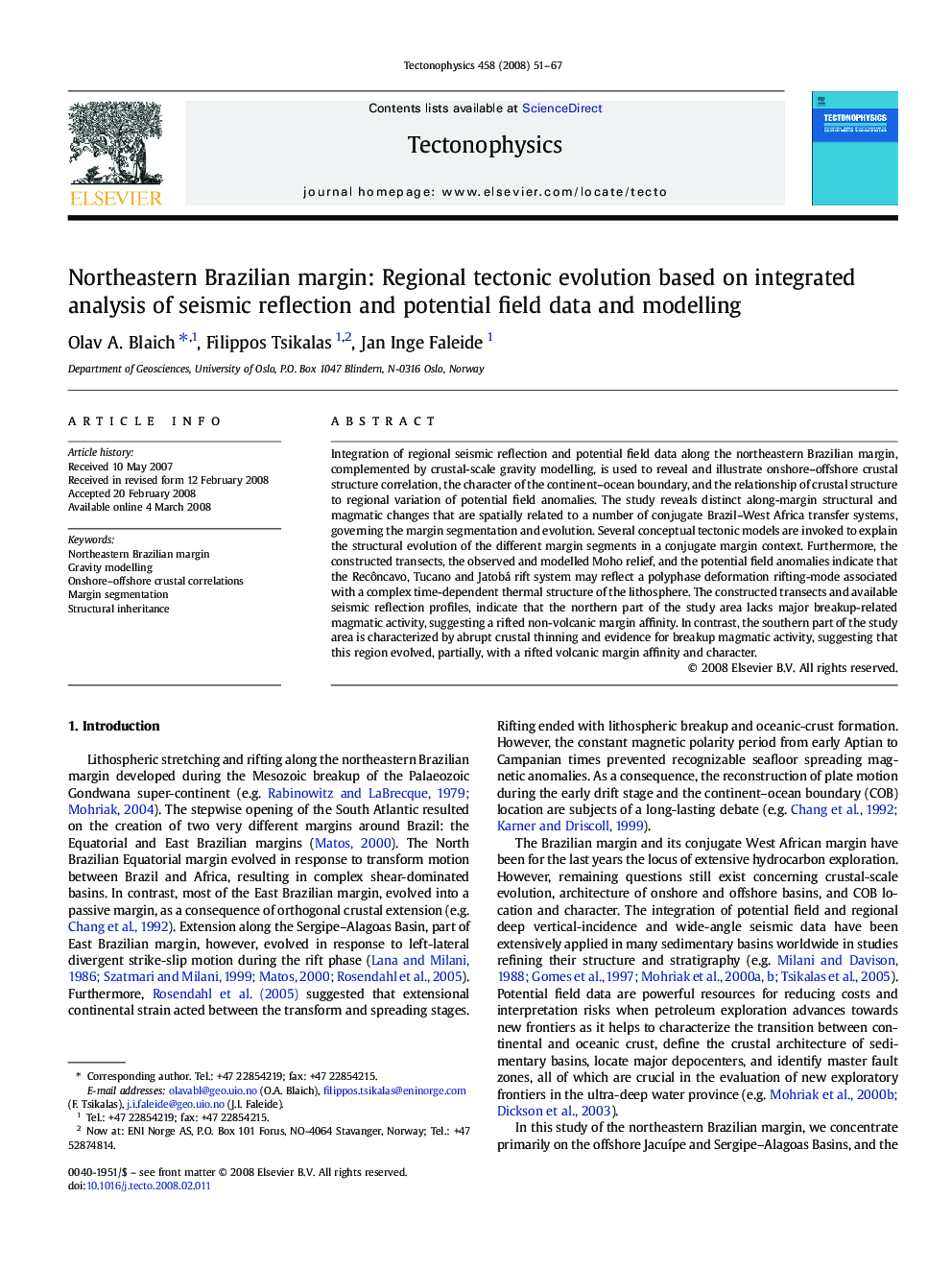| Article ID | Journal | Published Year | Pages | File Type |
|---|---|---|---|---|
| 4694400 | Tectonophysics | 2008 | 17 Pages |
Integration of regional seismic reflection and potential field data along the northeastern Brazilian margin, complemented by crustal-scale gravity modelling, is used to reveal and illustrate onshore–offshore crustal structure correlation, the character of the continent–ocean boundary, and the relationship of crustal structure to regional variation of potential field anomalies. The study reveals distinct along-margin structural and magmatic changes that are spatially related to a number of conjugate Brazil–West Africa transfer systems, governing the margin segmentation and evolution. Several conceptual tectonic models are invoked to explain the structural evolution of the different margin segments in a conjugate margin context. Furthermore, the constructed transects, the observed and modelled Moho relief, and the potential field anomalies indicate that the Recôncavo, Tucano and Jatobá rift system may reflect a polyphase deformation rifting-mode associated with a complex time-dependent thermal structure of the lithosphere. The constructed transects and available seismic reflection profiles, indicate that the northern part of the study area lacks major breakup-related magmatic activity, suggesting a rifted non-volcanic margin affinity. In contrast, the southern part of the study area is characterized by abrupt crustal thinning and evidence for breakup magmatic activity, suggesting that this region evolved, partially, with a rifted volcanic margin affinity and character.
